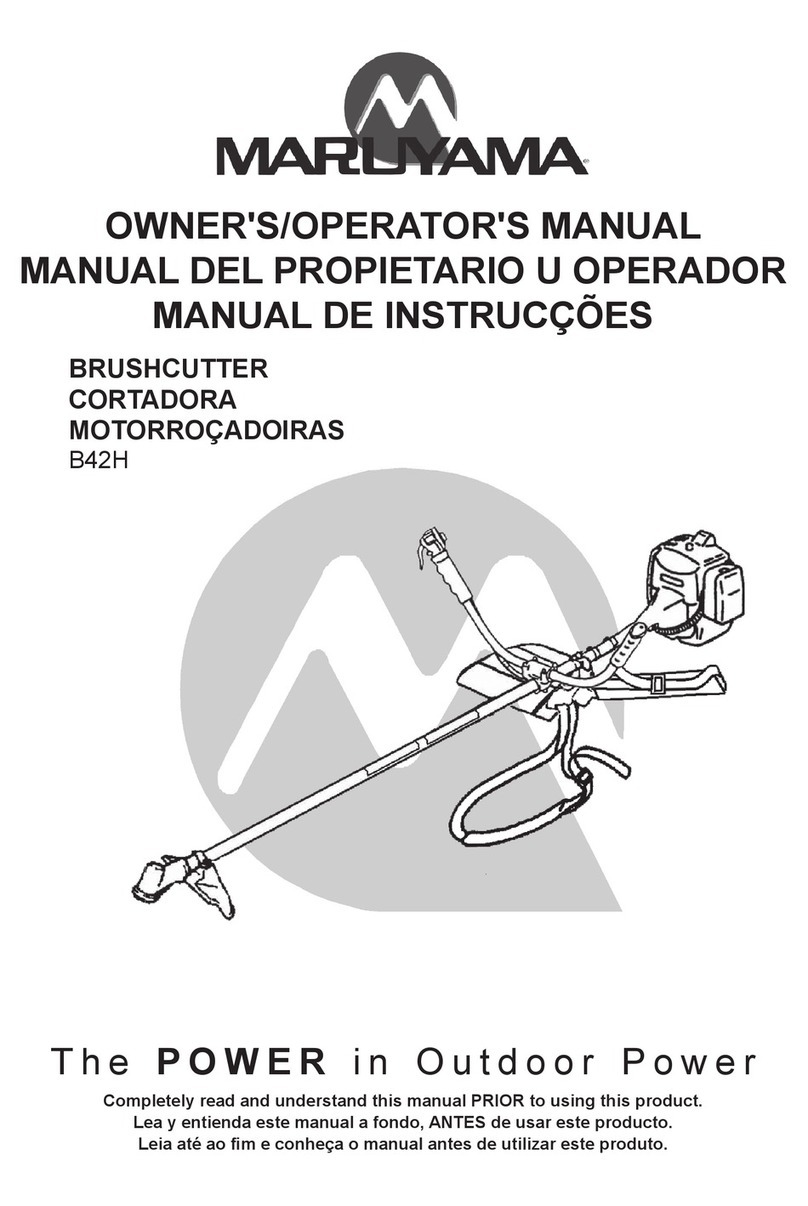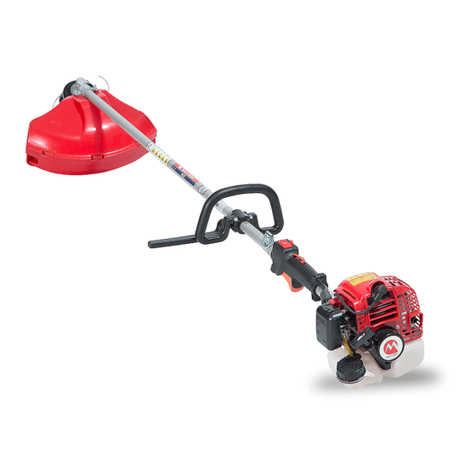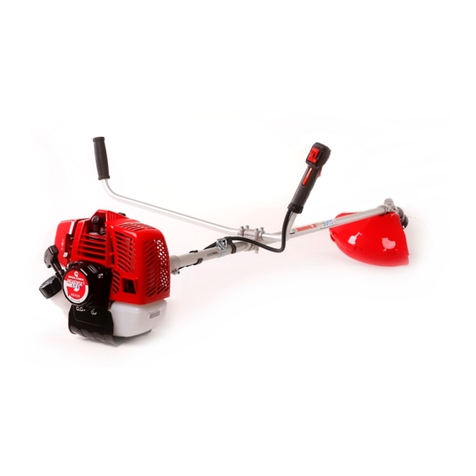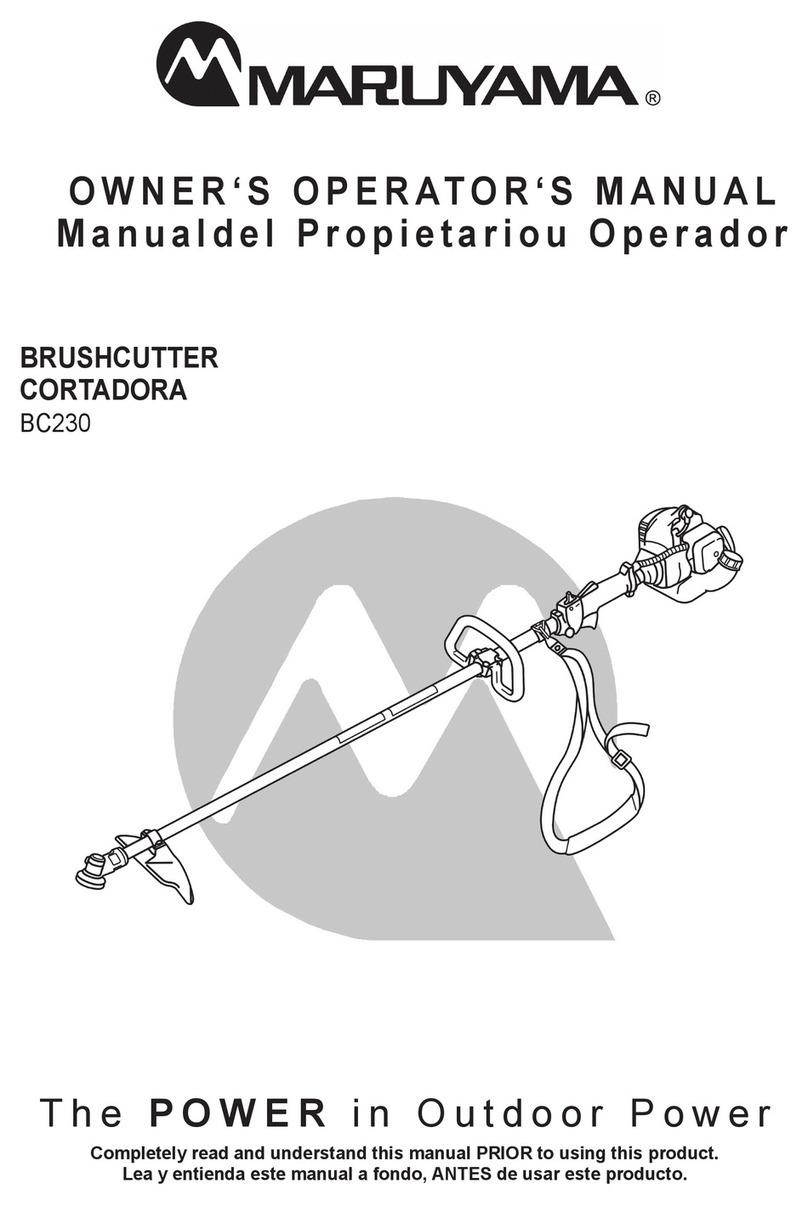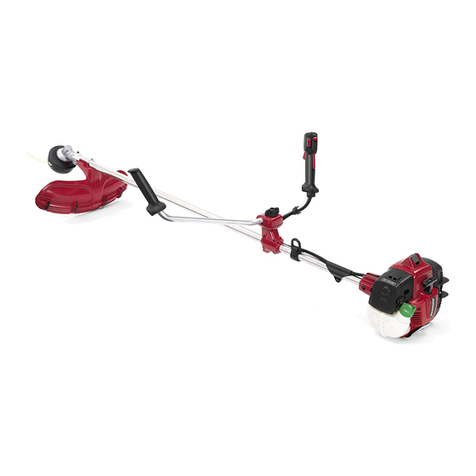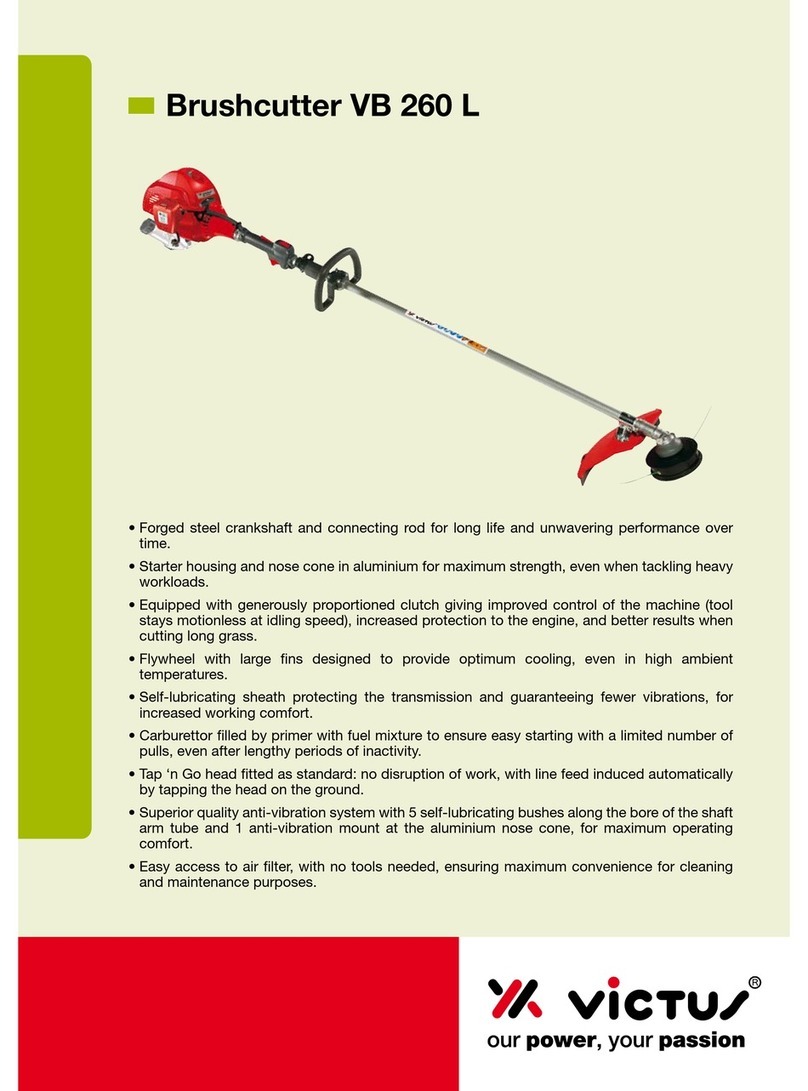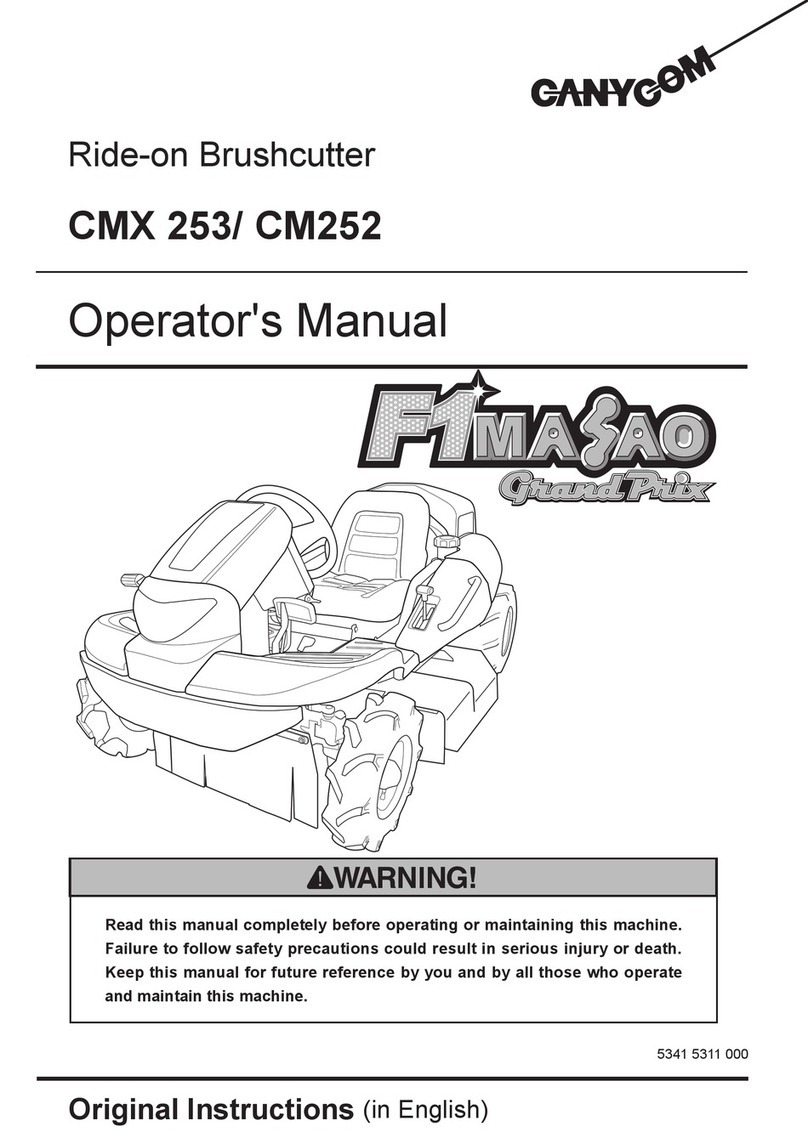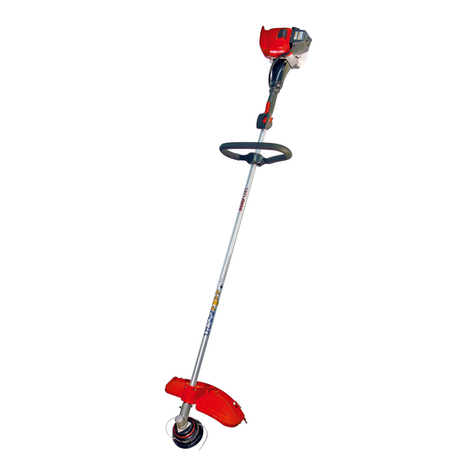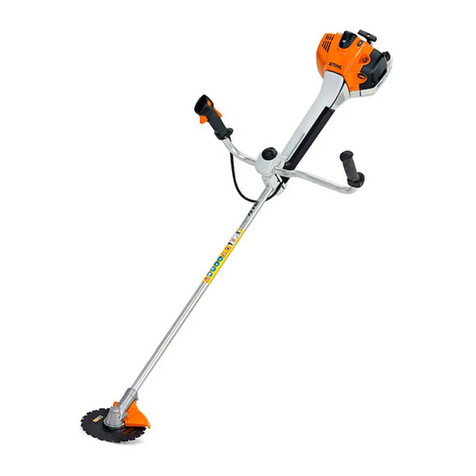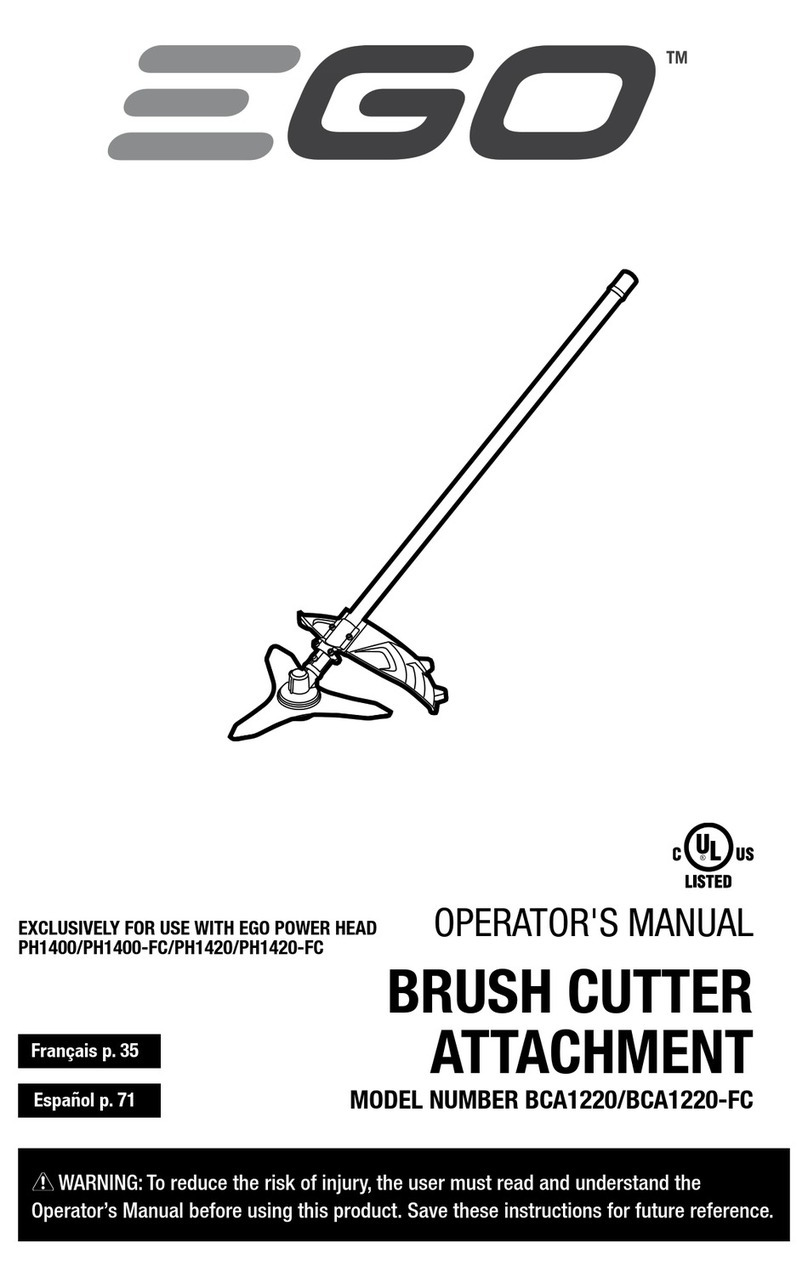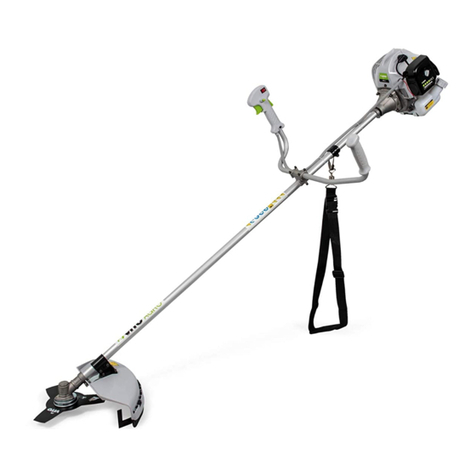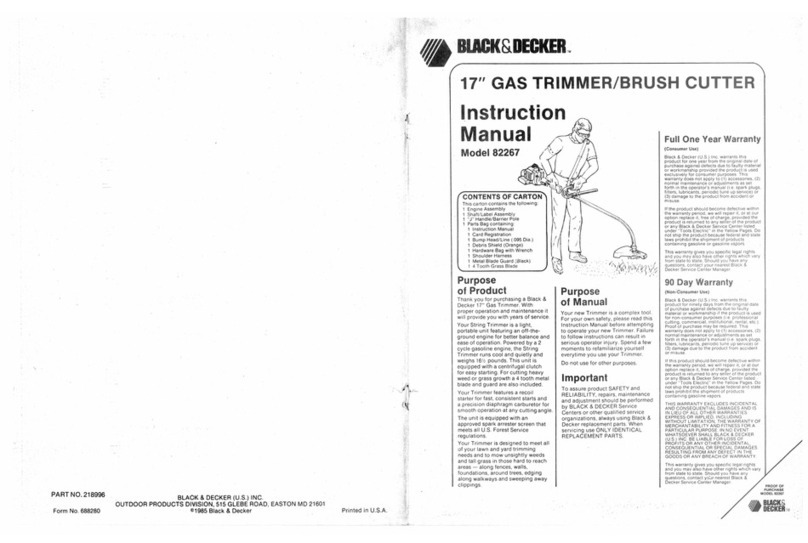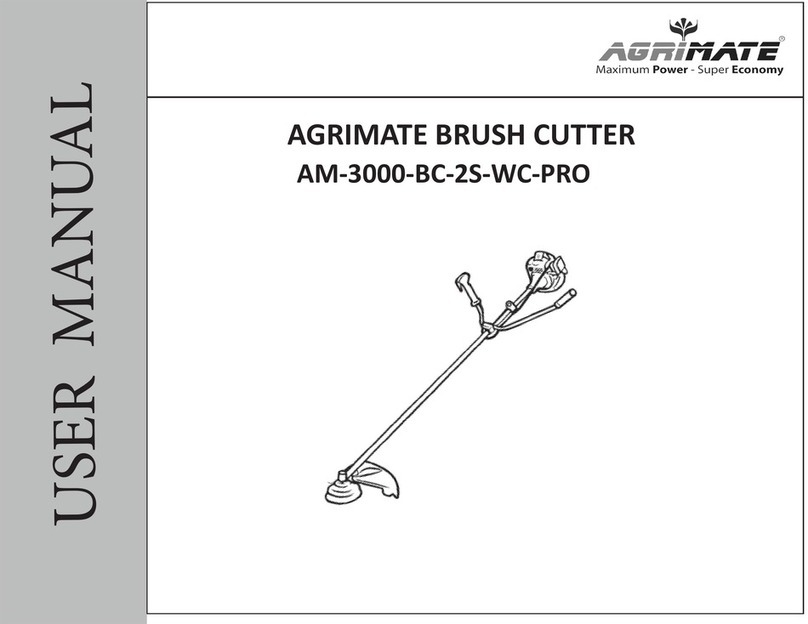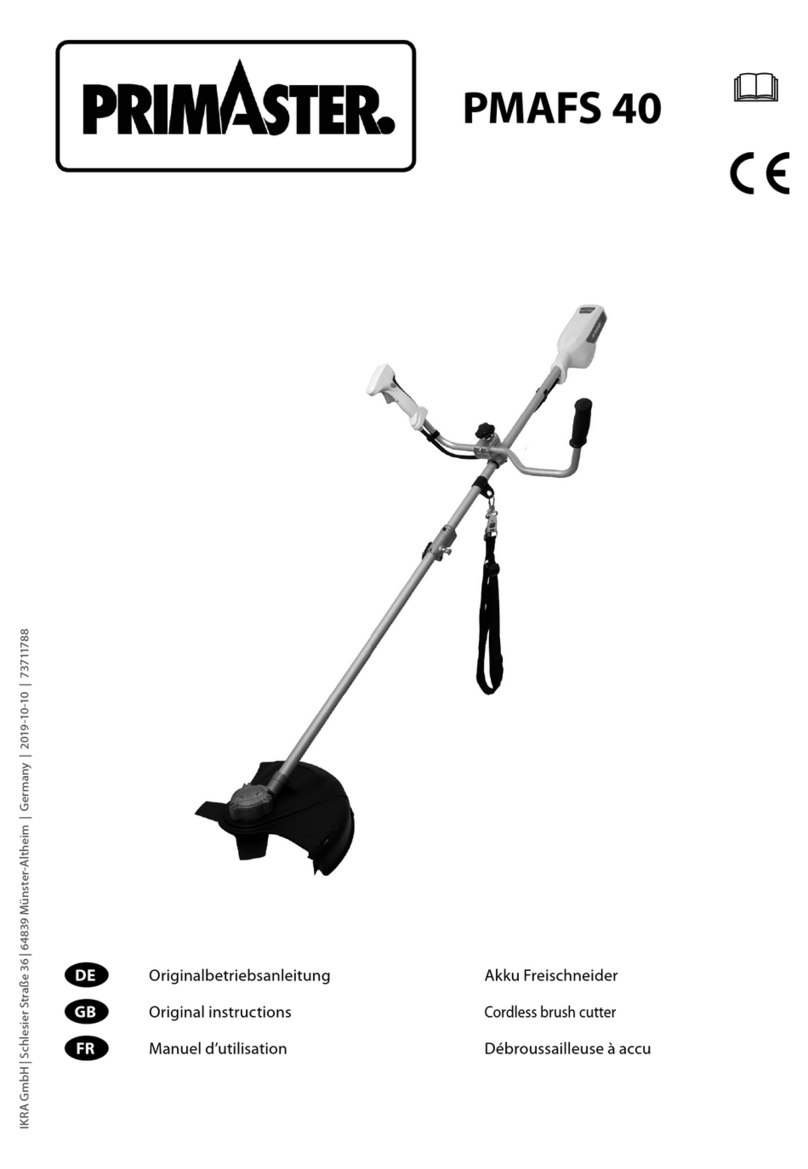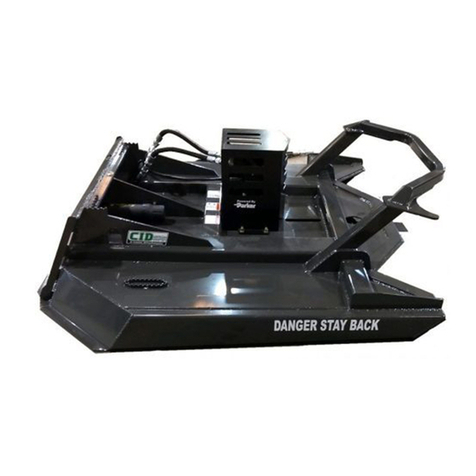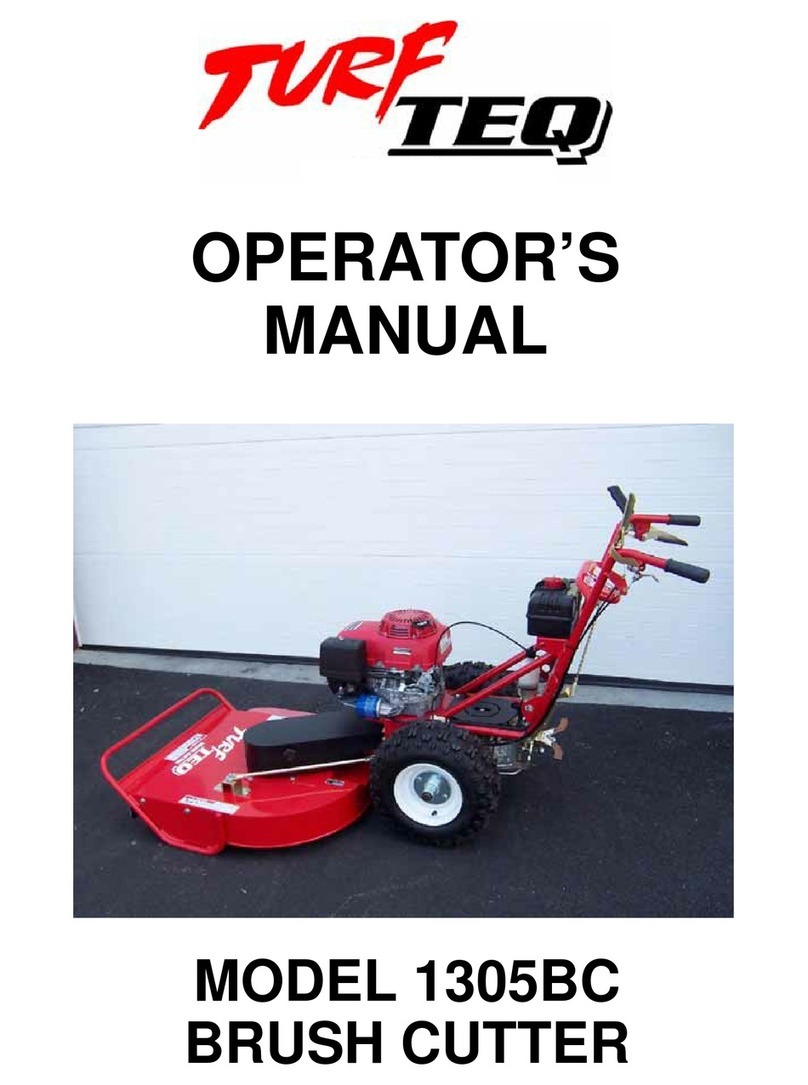―ES-1 ―
1. Lea y entienda este Manual de Instrucciones antes de usar
este producto. Familiarícese a fondo con el uso adecuado
de este equipo.
2. Nunca permita que los niños operen la Cortadora. Este no
es un juguete. Nunca permita que adultos operen la unidad
sin antes haber leído el Manual de Instrucciones.
3 Familiarícese con los controles de la máquina y aprenda
la forma de interrumpir su operación rápidamente.
4. SIEMPRE USE GAFAS DE SEGURIDAD o cualquier otra
protección apropiada para los ojos y emplee también
protección apropiada para los oídos.
5. No permita el acceso de gente o animales al área de
trabajo, especialmente de niños o mascotas.
6. Nunca opere la unidad cuando se sienta cansado o
fatigado. Nunca opere la máquina sin sus debidos
resguardos o elementos de protección o seguridad,
correctamente instalados.
7. Vístase en forma apropiada para el trabajo, sin ropa o
adornos sueltos. Estos pueden enredarse en los
elementos móviles de la máquina. Siempre use calzado
fuerte, pantalones largos y camisas de manga larga.
8. La gasolina es altamente inflamable y, por lo tanto,
manéjela con cuidado. Llene el tanque de combustible
con la mezcla indicada de gasolina y aceite, antes de
tratar de encender el motor.
A. Use un recipiente apropiado para gasolina para guardar la
mezcla de gasolina y aceite.
B. No llene el tanque cuando el motor esté operando o esté
caliente.
C. No fume cuando esté manejando gasolina.
D. Llene el tanque de combustible al aire libre y hasta un
nivel de unos 10 mm. del borde del tanque - no del borde
del cuello de llenado
E. Limpie cualquier cantidad de gasolina que se haya derra-
mado, antes de encender el motor.
9. Párese siempre en forma estable y segura, agarre firme-
mente, con ambas manos, los mangos y manubrios y
camine, nunca corra.
10. Use siempre la herramienta apropiada para el trabajo que
va a realizar. No use la cortadora de uso múltiple para
trabajos que el fabricante no recomienda.
11. Mantenga todos los elementos de sujeción en su lugar y
debidamente ajustados y verifique que la unidad está en
condiciones de operar en forma segura. Siga las inst-
rucciones de mantenimiento, empezando en las páginas
ES-6 y ES-7 de este Manual.
12. No acerque las manos o los pies a las piezas móviles.
Manténgase fuera del alcance de estas piezas en todo
momento.
13. Si se presentan problemas de marcha o de excesiva
vibración, detenga el motor inmediatamente e inspeccione
la unidad para localizar la causa. La vibración
generalmente indica que hay problemas mecánicos.
14. No corte demasiado cerca de la superficie del suelo para
evitar que la cuchilla golpee guijarros u otros desperdicios.
Evite usar la cortadora de maleza en zonas de roca, grava,
piedra y materiales similares.
15. Use la cortadora de uso múltiple únicamente de día o con
buena luz artificial.
16. Apague el motor y cerciórese de que el accesorio
instalado ha dejado de girar completamente antes de
invertir la máquina.
Modelo MBS329
Largo Total (mm) 2710
Ancho Total (mm) 345
Dimensiones
Altura Total (mm) 465
Peso (kg / lbs) 9,6/ 21,2
Engranaje Engranaje de bisel en espiral
Relación de reducción 1:1,46
Modelo AE320
Tipo Enfriado por Aire, de 2 ciclos, de un cilindro
Desplazamiento del Pistón (cm3) 31,8
Capacidad del tanque de combustible (/ qts.) 1,0
Carburador Tipo diafragma
Sistema de encendido Sistema de estado sólido
Bujía de encendido NGK BPM6Y
Luz entre electrodos (mm / in.) 0,6 – 0,7 / 0,024 – 0,028
Motor
ILa gasolina para engrasar la proporción
USE UNICAMENTE GASOLINA REGULAR SIN
PLOMO.MEZCLA 25:1 DE ACIEITE PARA MOTOR 2 CICLOS.
DEBE SER APROBADO PARA MOTOR ENFRIADO POR AIRE.
ESPECIFICACIONES
INSTRUCCIONES DE SEGURIDAD
